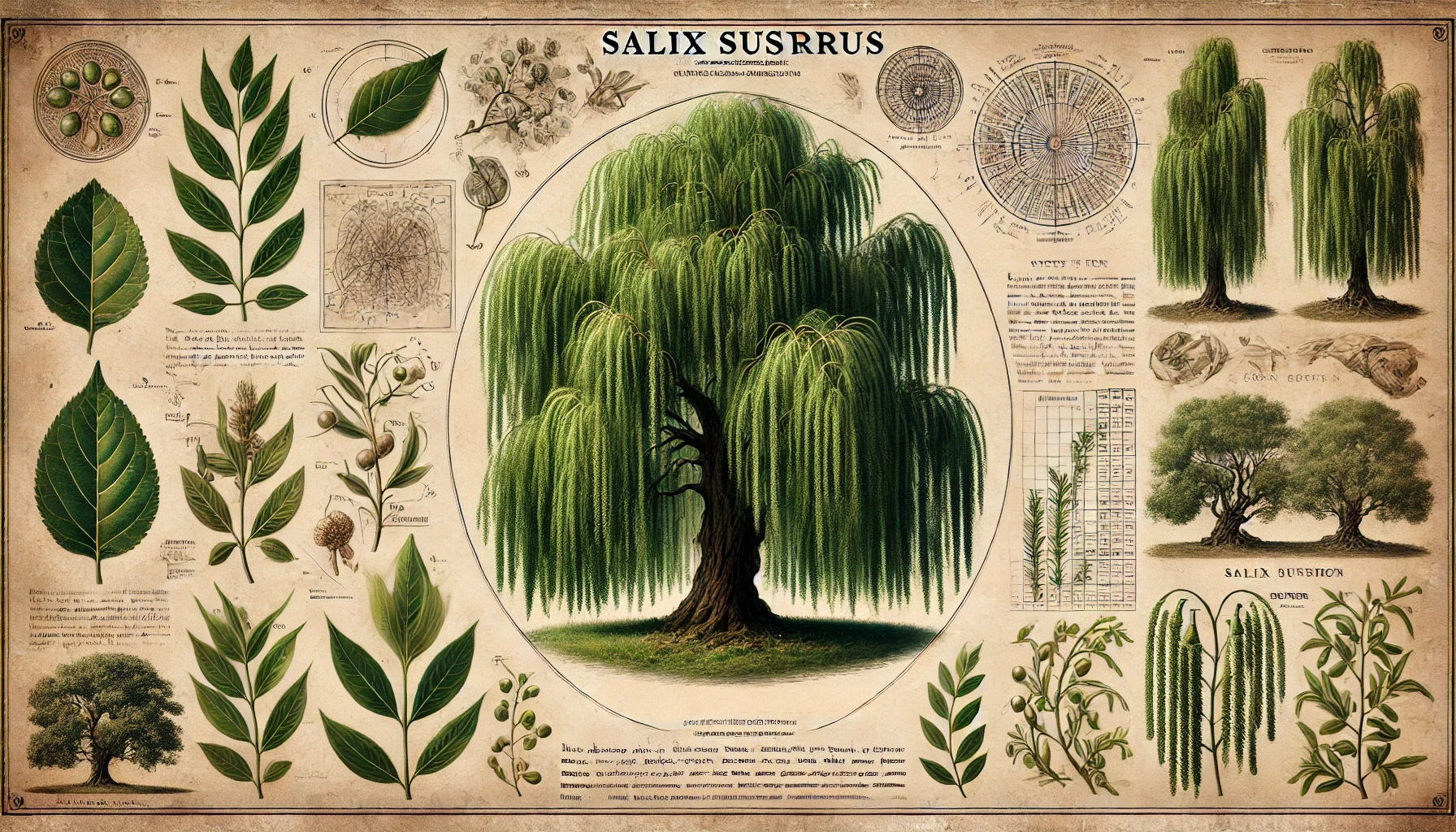Visual Description
The Whispering Willow is an elegant, graceful tree that towers quietly over riverbanks and flooded meadows. Its cascading green branches sweep gently downward, creating a secluded curtain beneath its canopy. Each elongated leaf carries translucent green veins, luminous in sunlight, casting delicate patterns on the ground below.
Even in the slightest breeze, the leaves tremble rhythmically, producing a gentle, whisper-like rustle—a sound locals describe as both comforting and faintly sorrowful, like a secret conversation heard from another room.
Habitat and Growth
This willow favors riverbanks, marshlands, and flood plains where water levels fluctuate seasonally. Its extensive root system helps stabilize river edges and filter water, enhancing the health of surrounding ecosystems. The tree’s relationship with local wildlife—particularly birds—is notably mutualistic: it provides shelter and nesting space, and in turn, its seeds are dispersed far and wide.
Whispering Willows reproduce through slender, pendulous catkins that release a fine fluff laden with seeds. This fluff is carried effortlessly by wind and water, spreading the tree’s presence gently along waterways.
Alchemical Use and Preparation
The tree’s leaves, when harvested at dawn, are gently dried and brewed into teas or tinctures known for their subtle yet profound effect of enhancing empathy. Drinkers find their ability to perceive and resonate with the emotions and intentions of others significantly heightened—be they human, animal, or even plant.
This infusion is especially valued by healers, negotiators, animal caretakers, and druids, as it creates a natural bridge of understanding that aids in healing, communication, and peaceful resolution.
Leaves must be harvested with care, preserving their delicate structure and stored carefully in sealed pouches to maintain their empathetic potency.
Warnings and Curiosities
Overuse of Whispering Willow infusions can result in overwhelming emotional sensitivity, leaving the user vulnerable to absorbing the emotions of others too deeply. Prolonged exposure can even cause emotional exhaustion, making it challenging to differentiate one’s own feelings from external influences.
A commonly confused plant is the Weeping Birch, easily distinguished by its white bark. However, it lacks the characteristic whisper and empathetic alchemical effects.
Historical Notes and Folklore
Whispering Willows are traditional sites for druidic rituals and peaceful mediation, chosen for their natural aura of serenity and connectedness. It is customary in many riverside communities to plant a Whispering Willow at the center of the village or along ceremonial paths—believed to gently diffuse tensions and promote harmony.
Folklore tells that the tree whispers memories of everything it has witnessed, from lovers’ vows to secret truths. A common saying among elders is:
“Speak softly near the willow—lest the leaves carry your heart away.”
“If you feel lonely beneath a willow, you’ve forgotten how to listen.”
— Ellaswen Tairil, Warden
The Willow’s Guest
A local legend tells of a sparrow who lived an entire lifetime sheltered in the branches of a single Whispering Willow. The bird never sang, and never left. Villagers believed it listened to every whisper the tree gathered. On the day it finally flew away, they say the tree wept petals into the wind, and the sparrow carried its secrets gently away, releasing them one by one across the forest.
The Sensitive Watcher
A novice druid once spent a fortnight beneath a Whispering Willow to deepen her empathy. She returned early, visibly changed, saying softly:
“It’s not hearing too much that frightens me. It’s realizing how little I listened before.”
She became a beloved healer, though she never visited the willow again.



Comments